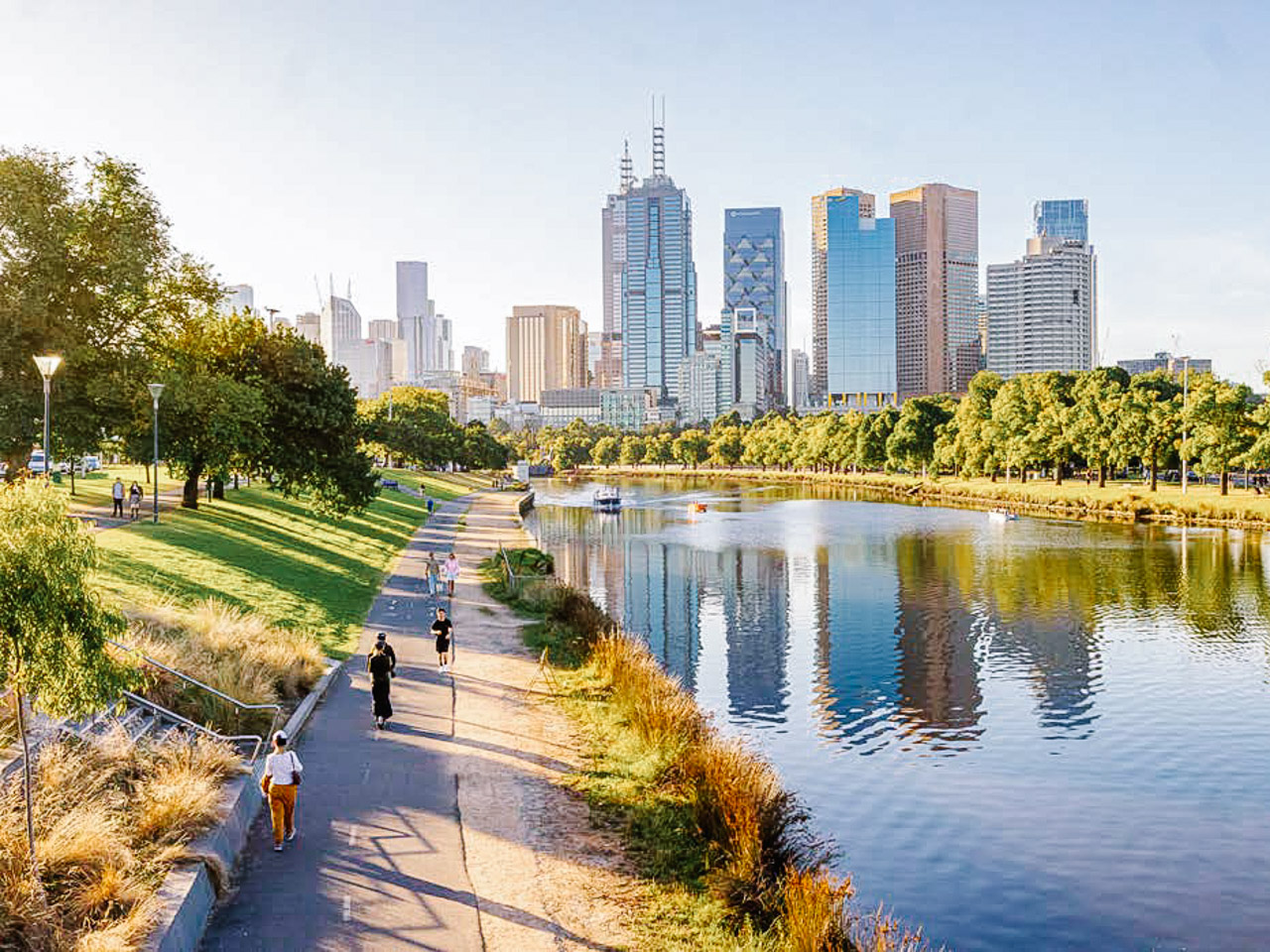2024 Special Mention — Melbourne
Melbourne is recognised for being a city emblematic of resilience and innovation and redefining the urban landscape through a series of transformative initiatives over many decades, reaffirming its status as one of the most liveable cities in the world.1
 The City of Melbourne with its Yarra River © City of Melbourne
The City of Melbourne with its Yarra River © City of Melbourne
MELBOURNE is recognised for being a city emblematic of resilience and innovation and redefining the urban landscape through a series of transformative initiatives over many decades, reaffirming its status as one of the most liveable cities in the world. Confronting challenges brought forth by the pandemic, Melbourne has shown steadfast adaptability and foresight.
Post-pandemic recovery and liveability
In the wake of COVID-19, Melbourne adopted several innovative approaches to urban recovery. The Flash Forward Laneways initiative that converted neglected alleys into vibrant streets not only revitalised the economy, but also injected vibrancy and excitement into the city, bolstered local businesses and fostered a renewed sense of community and local identity. Despite the rising housing cost, Melbourne’s commitment to its essential workers is evident in its innovative affordable housing strategies. Developed through public-private partnerships, these strategies allowed key workers, such as nurses, to reside within the proximity of the city, mitigating commuting challenges and strengthening community fabric.
Building upon previous efforts to transform the Yarra River from an industrial waterway to a recreational corridor, a new initiative under the Greenline Project boldly celebrates Aboriginal culture and Melbourne’s unique ecology, further rejuvenating the waterway. These initiatives demonstrate Melbourne as a city where society not only perseveres but also thrives with a sense of belonging through tumultuous periods.
Enhanced infrastructure and traffic management
Melbourne made remarkable progress towards sustainable transportation by achieving one-third modal share between walking, public transport, and private transport through its compact and mixed-use development strategy in the city that prioritises public transportation and active mobility infrastructure. The city’s dedication to constantly improve urban mobility and reduce traffic congestion is evident in ongoing ambitious projects like the Metro Tunnel and the Sub-Urban Rail Loop.
These transformative projects are envisaged to further address traffic congestion and reduce burden on existing tram lines. The Metro Tunnel is set to cut travel times by up to 50 percent on certain routes, while the Sub-Urban Rail Loop is anticipated to generate 50,000 jobs and inject AUD 25 billion into the Victorian economy. The Metro Tunnel is nearing completion, while the construction of the first phase (26 kilometres) of the Sub-Urban Rail Loop (90 kilometres) is currently underway.
Emphasis on design excellence and collaboration across sectors
Melbourne’s well-designed public realm and urban spaces, and its Design Excellence programme, are a testament to its continued emphasis on urban design quality. This recent initiative, coupled with collaborative efforts with industry leaders, has elevated Melbourne’s ambition towards building architectural design excellence. By encouraging architects and developers to subject their proposals to rigorous design review, Melbourne has established a culture of collaborative design innovation.
Melbourne, though compact, serves as the heart of Greater Melbourne, supporting over five million people in the metropolitan area. Some of its urban transformation successes can be attributed to close collaboration between State and Municipal governments, as evident in initiatives like Melbourne M9 that fosters collaborative strategies. State involvement in major upcoming projects, such as the Metro Tunnel, Sub-Urban Rail Loop, and the Southbank Art Precinct, reflects a unified urban development approach. When completed, these projects will further reinforce Melbourne’s continued commitment to innovation, inclusivity, and good governance.
Melbourne’s appeal attracts many to relocate for residential, professional, and educational purposes. While the city faces a shortage of affordable housing, efforts to introduce social facilities in new residential areas and innovation in high-density housing designs aim to sustain Melbourne’s status as one of the most liveable cities in the world. O
Commemorative video
Case studies
| 01 | Design Excellence Programme A programme to enhance Melbourne’s built environment through innovative, inclusive, and sustainable design for a liveable city. |
| 02 | Flash Forward Creative Laneways A programme that transformed Melbourne’s laneways into vibrant public spaces, supporting local artists and community recovery post-COVID-19. |
-
All information correct as of 2023. ↩

